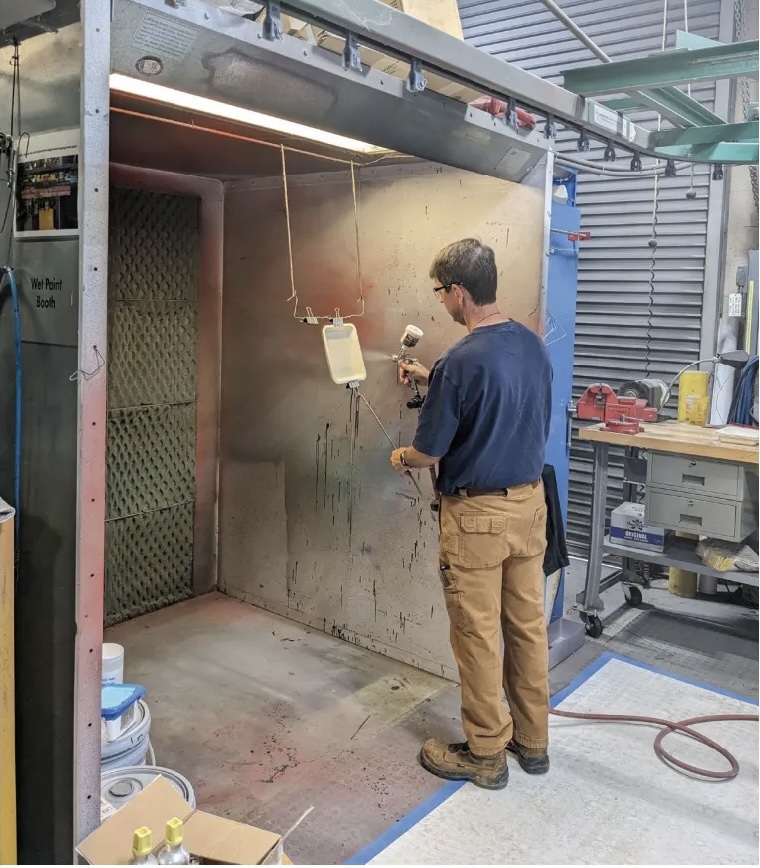Ultrasonic Drying of Biodegradable Molded Recycled Paper
- Published: July 01, 2024
By Gene Plavnik, President, Heat Technologies, Inc.
 This first of a three-part series will discuss a test program conducted by Heat Technologies, Inc.'s Spectra HE UltraTM drying system aimed at establishing optimized operating parameters of single-serving containers manufactured from recycled paper fiber suitable for food products with contained moisture.
This first of a three-part series will discuss a test program conducted by Heat Technologies, Inc.'s Spectra HE UltraTM drying system aimed at establishing optimized operating parameters of single-serving containers manufactured from recycled paper fiber suitable for food products with contained moisture.
Two groups of identical geometry and weight containers were tested. One group was impregnated with biodegradable additives and the second one was not. Both groups were coated with equal quantities of the Reef biodegradable barrier coatings.
Both the additive and the coating were manufactured by Cellucomp (UK) and independently tested by the QC laboratory of Danish Technological Institute (Denmark). Results of the tests (COBB 1800, MTR-WTR) offer best coat weights to obtain most acceptable results by U.S. and International standards.
Operating temperatures, production throughput, as well as general dimensions and energy consumption are presented in this article. Part one of this series describes background of the test program/responsibilities of each party. Part two will discuss the nature of the biodegradable additives and barrier coatings, with brief description of ultrasonic drying and a description of the test program. Part three will contain results, data analysis and conclusions.
We see the public movement in making everyday life free of harmful chemicals, having more consumer products made sustainably as biodegradable, compostable options grow day-by-day. One area of implementation toward a circular economy on the global scale is in food packaging. Specifically, sustainable paper-based packaging products are slowly but surely replacing plastic ones.
Discussions on biodegradability in packaging, replacing plastic with paper in various converting-and packaging-related applications, take place in various national and international technical congresses, conferences, symposiums and so on. As a result of the discussion held at several technical conferences, Danish Technological Institute, (DTI), in Taastrup, Denmark and Cellucomp, a UK-based producer of plant-based additives and coatings, Curran® and Reef® respectively, approached Heat Technologies, Inc., (HT), a U.S.-based corporation, with a request to conduct ultrasonic drying tests of single-use food containers, such as recycled paper fiber bowls, to evaluate economic and engineering feasibility of the implementation of these products within the biodegradable segment of food packaging. Examples of these applications are yogurt cups, bowls for salads, containers for prepared meals, ground meat packaging, single-serve cups for oatmeal and other hot cereals, sausage packaging and so on.
 The purpose of the tests was to establish a difference in the food packaging properties between two groups of bowls. One group of bowls was impregnated by a sugar beet additive, Curran®, manufactured by Cellucomp Ltd., and the other was thermoformed without any biodegradable additives. Both groups were projected to be quality control tested by DTI after completion of the drying tests by HTI.
The purpose of the tests was to establish a difference in the food packaging properties between two groups of bowls. One group of bowls was impregnated by a sugar beet additive, Curran®, manufactured by Cellucomp Ltd., and the other was thermoformed without any biodegradable additives. Both groups were projected to be quality control tested by DTI after completion of the drying tests by HTI.
DTI was responsible for specific tests on permeability. The tests were Cob 1800 and Moisture Transmission Rate or Water Transmission Rate. DTI was also responsible for the delivery of both types of bowls to HTI. The delivered bowls were of the same size, configuration and base weight.
These two groups had 16 bowls per group. The bowls which contained the Curran were marked as CX, and the one that was thermoformed without it was marked as NC X. Four bowls were left as control samples and later marked as CNCX and CC X, where X - is a specific number for each sample.
Cellucomp Ltd. was responsible for the delivery of the Curran dispersion (coating.) A sufficient amount of the Reef® dispersion was delivered to HTI for the tests. The test program has the following milestones:
- Coat both types of bowls (impregnated and non-impregnated with Curran) with Reef coating and dry it by ITI's Spectra HE Ultra ultrasonic dryer.
- Establish the operating parameters of the ultrasonic dryer that are needed for efficient drying. That includes projected physical size of the dryer, throughput range, line speed, temperature and energy consumption.
- Perform quality control tests of the dried bowls on acceptability by major food-related technological parameters to establish the best engineering practice for the 3D containers. This was the responsibility of DTI. The bowls were to be tested for water absorption via two industry standard gravimetric tests: Cobb 1800 test and moisture (water vapor) transmission rate (MTR, or WTR)-.
- If coating and impregnating of the bowls is necessary based on the above analyses results, optimum range of the coat weights (g/m2) needs to be established for best future engineering practices.
- Comparison of Spectra HE Ultra Drying Technology with High Velocity Convective Technology.
Watch for part two of this series, in which major definitions of the related parties, the equipment, drying tests, quality control tests and data matrix utilized in this test program will be shared.
About the Author
President at Heat Technologies, Gene Plavnik has more than 25 years of experience in the development, manufacturing commercialization of industrial and commercial heating and drying equipment for a variety of converting, packaging and paper industries. He is the author of nine U.S. and numerous European patents and holds a Master of Science Degree in Heat and Mass Transfer.





